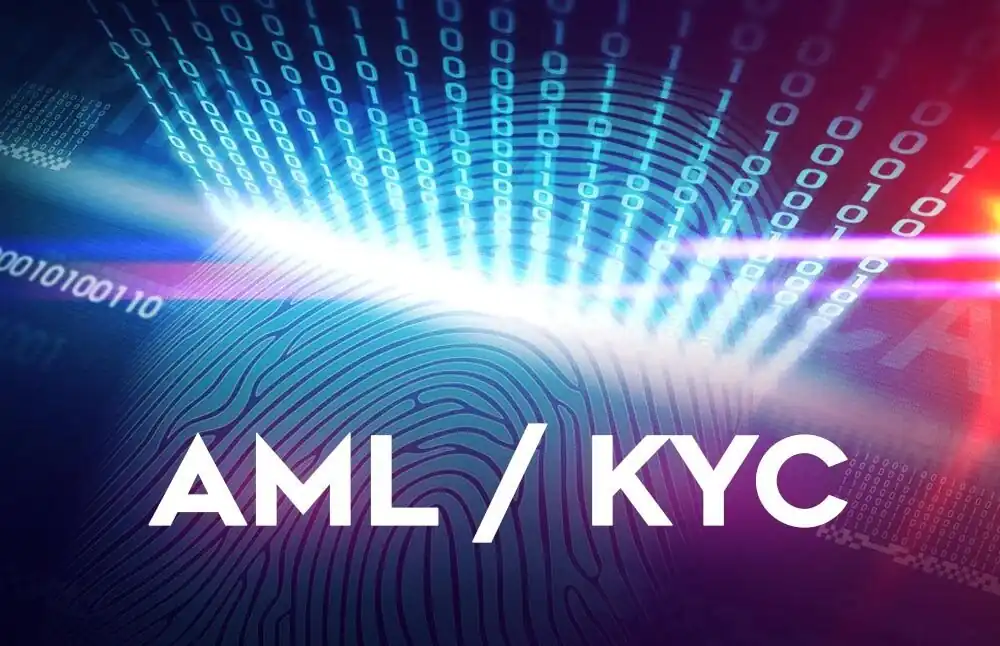The cryptocurrency market has recently experienced an extreme rate of volatility. Yet, we can still count over 420 million cryptocurrency owners from all over the world. Because users on crypto platforms are usually anonymous, criminally-minded individuals have found an attractive opportunity to defraud unsuspecting users and cart away their fortune. According to Fintech Global, the crypto space witnessed an all-time high rate of illicit activity worth $20.1bn in 2022. The possibility of fraud in the crypto market has ignited regulatory bodies to implement Know Your Customer (KYC) guidelines to help crypto traders mitigate risks associated with their daily transactions. In the following sub-sections, we shall briefly explain what crypto KYC is all about, how it functions, its benefits, risks, and the fate of crypto traders who shun KYC when making transactions.
What is KYC Crypto
KYC in crypto also relates to the Anti Money Laundering (AML) directives that have the objective of uncovering attempts to accord illicit funds the status of legally generated income. KYC is presented as the first step toward fighting money laundering in crypto spaces. Similarly, it helps different users curtail the risks of being scammed. Hence, KYC establishes controls to facilitate transactions, prevent identity theft, and increase online trading security. With crypto KYC, therefore, exchange on crypto platforms like Plasbit has become safe and boosted the confidence of every user. With its potential to help mitigate risks and tackle customers’ vulnerability, it has proven effective in boosting customers’ confidence which is the focus of Plasbit.
How does KYC work?
Being the first stage of AML due diligence, financial institutions collect data to identify new users and verify their identity. First, they confirm end users' and customers' personal information, verify the legality of their activities, and finally determine whether the available data indicates the possibility of the users posing money laundering risks. On Plasbit, for instance, we incorporate the crypto KYC process in line with the AML protocol outlined by regulators.
How VASPs implement KYC compliance
For starters, VASPs is the acronym for Virtual Asset Service Providers. VASPs take adequate measures to prevent fraudulent activities on their platforms by implementing the following steps to do a background check of their prospective users. These include:
· Step 1: VASPs require their customers to provide personally identifiable information (PII), including their full name, date of birth, and address (as they appear on their identity card and other documents issued by the government in their respective countries).
· Step 2: The information provided in the first step is compared with the information on the official identification documents issued by their respective countries to confirm the integrity of the information provided. Documents for this verification could be a passport, driver's license, or proof of residence.
· Step 3: The final step of this due diligence to prevent fraud and money laundering requires the financial institution to consult official databases to confirm that the new user's name is not listed as a sanctioned individual for criminal endeavors. Plasbit applies these steps to verify the identity of users. Once these verification steps are checked, the trader can effectively engage in cryptocurrency transactions.
BENEFITS OF CRYPTO KYC
Beyond the prevention of money laundering and fraud, crypto KYC also has many benefits for individual users. These are:
· Building of trust among customers: because users must verify their identity before making transactions on different financial platforms like Plasbit, they can confidently trade and trust the other party involved in their transaction. With this, users are more likely to patronize a cryptocurrency exchange platform that seeks to protect their accounts and transactions.
· Reduction in money laundering and scams: money laundering and frauds have sought to maximize the privacy of traders promoted by blockchain technology. However, with crypto KYC, there is a check on potential scammers and money launderers based on the requirement for every user to provide verified personal information that can make them trackable.
· Protect VASPs from legal risks: financial institutions can reduce legal and regulatory risks because of the prior requirement to ascertain that their users are not involved in identity theft, money laundering, and other related fraudulent activities. Since they would have assessed each customer through government-issued identification documents, they can commit more time to improve the quality of customer experience, transaction, and conversation rates on their platforms.
· Market growth and stability: it has been observed that suspicious anonymous transactions are responsible for the highly volatile nature of the crypto market. With KYC guidelines on Plasbit, the identification of every user means that their activities can be tracked and controlled. The overall effect of this possibility resides in the stability of the crypto market and a significant growth in its value.

RISK ASSOCIATED WITH CRYPTO KYC
While one can highlight the benefits of crypto KYC, there are also associated risks and vulnerabilities VASPs should know to develop and implement a more effective risk mitigation protocol. This risk mitigation protocol is essential because new strategies to tackle fraud and money laundering also generate novel methodologies for criminal activities. Below are the significant risks to know:
· Transaction speed often bypasses AML/CFT controls: the transactions on crypto platforms are usually concluded in seconds. Hence, Anti-money Laundering/Counter-terrorism Financing controls are only sometimes completed after the transaction is closed. A more proactive way to ensure this control would be to ensure that AML/CFT controls are required processes to transfer funds from one wallet to another.
· Innovation on the part of money launderers: money launderers always find novel ways to bypass regulations. Hence, they structure their transactions in small amounts using different accounts to eliminate suspicion of regulatory bodies. Crypto platforms can limit the number of accounts an individual can create to prevent this outcome or minimize its possibility. No one should have more than one account, and facial recognition, fingerprint, and voice should be adopted to ensure no one owns multiple accounts.
· Introduction of money mule: another novel way for fraudsters and money launderers is to use a third party known as "money mules" for their transaction. By making this exchange on their behalf, they erase any possible attempt to trace the illicit activities to them. Hence, they can hide their identity while engaging in criminal ventures. The onus is on the financial platforms to devise a means of identifying money mules. The action could entail closely studying the user's background and the crypto asset in their possession.
· Poor trading experience: crypto exchange customers are interested in trading on a platform that promises them security. When VASPs implement unsuitable KYC regulations, users become vulnerable to illicit activities and may risk losing their assets. Hence, proper and adequate crypto KYC guidelines should be implemented to mitigate the risks of transactions and ensure a premium customer experience.
What is the place of CFT in KYC?
It has been noted in the preceding sections that CFT stands for Counter-Terrorism Financing. Unlike AML, which tracks how money moves from one person or group of people to another, CFT seeks to prevent the movement of money to fund terrorism. Hence, it blocks possible means of accessing funds to further religious insurgency, and radical political or ideological activities. It is specifically aimed at defunding violent groups whose activities have been flagged as unleashing terror and threatening the peace and stability of a particular environment. Because of the privacy on crypto exchange platforms, individuals with close links to these radical movements move money by converting them to crypto assets that can be exchanged and converted to the official currency in the country of operation of the sponsored groups. With crypto KYC, it becomes easier to identify and track the financing of radical groups and also take counter-terrorism action to promote peace and stability.
Is KYC compulsory for crypto wallets?
Custodial and non-custodial wallets are two types of crypto wallets. Each of these wallets has unique functionality. For instance, custodial wallets are held by VASPs with private keys for accessibility. Meanwhile, non-custodial wallets are not regulated by VASPs, which are third parties in this context. Since non-custodial does not function according to the regulation of VASPs, it does not need KYC for transactions. Therefore, KYC is only compulsory for custodial wallets like the Plasbit wallet.
Nevertheless, knowing the significant risks associated with trading without KYC is essential. It is not recommended. In addition, trading with KYC has more robust AML procedures; it makes it easier to find willing buyers and sellers since it comes with high risks; and requires a higher transaction fee.
KYC and ease of crypto exchange activities
Safety is vital in sustaining an activity. The same thing applies to crypto exchange. It is imperative for people to safely deal with other traders without any fear of losing their assets. In this regard, KYC has proven itself to be the proper guideline to ensure the longevity of crypto exchange. While it still needs a continuous level of improvement to put fraudsters in check, it has proven effective in reducing risk factors that would have discouraged traders from using online crypto transactions. Hence, there is increasing public confidence in cryptocurrency, particularly among the political skeptics who think it is a dark world where illicit activities occur.
Conclusion
The emergency of cryptocurrency significantly influenced the financial market. It introduced digital assets and cards controlled by people from different origins and broke transnational barriers. While it has been argued that crypto exchange has played a role in boosting the world's interconnectedness, it can also be explained that it has provided an international platform to connect criminals and fraudsters. This recent development is the reason why the regulation of the crypto space with the adoption of crypto KYC guidelines is a proactive innovation that would not only regulate crypto transactions by protecting users but also ensure that cross-border security is not jeopardized in a bid to connect the world financially.
Understanding the different steps involved in the background check of every user, the benefit of using crypto KYC, the devised means of bypassing regulation by fraudulent users, and the risks associated with engaging in transactions without KYC, users can effectively look out for their best interests within the purview of legality and also contribute to the growth of the market value. This reason motivated our recommendation for every user to devote their time to understanding the mode of operation of the crypto platforms they intend to use as their crypto exchange platform. Plasbit has made a series of efforts, among many other exchange platforms, to ensure that the value behind crypto assets and cards is promoted to meet customers' expectations. Trading in crypto is profitable. However, when the risks and vulnerabilities are not adequately addressed, customers can be at risk of loss, affecting the market value of digital assets.







